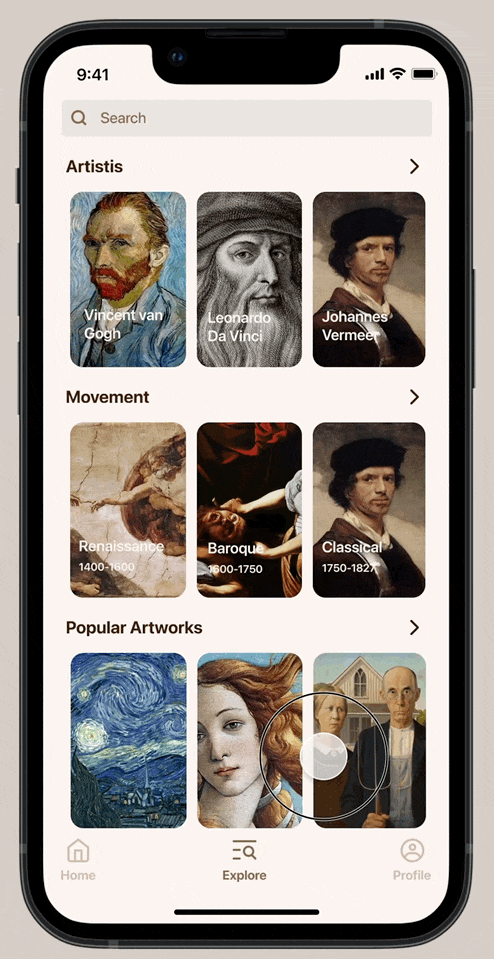
MUSEUM IN THE CLOUD
A new way to share, discuss and think about art artwork and encourage participation in arts and culture

"The first job of any artist is to communicate a beautiful idea." —Teller
OVERVIEW
Museum in the cloud is a mobile app, a new way to share, discuss, and think about art artwork and encourage participation in arts and culture. Through the app, people can find information about art, artists, museums, culture, and exhibitions.
With the discovery, people can enjoy art both physically and virtually and get details about the artwork or learn about the artist. It also serves as a platform for people to learn about the different perspectives of and insights into artwork from different people and to participate in discussions.
TIMELINE
2022 September - December
TOOL
Figma
Miro
Adobe Illustrator
CONTRIBUTION
Research
UX Design
Challenges
As the use of technology increases, the challenge is to use it in a way that positively impacts people's lives and creates a new experience. As a member of this community and an art lover, I wanted to gain insight into this group and their need to give people a more interesting experience to explore art objects and culture.
Are you
curious
about what
they are
thinking?
The objective of this museum app is to create that space and blend an online and in-person experience that allows people to reflect, learn, and discuss.

Approach
Before constructing feasible user research questions, I focused on the big picture. I started by conducting research with the following goals:

REFLECTION.
Impact
I'm very proud that my project has been recognized by my program and school. The design is currently being negotiated and discussed with Harvard innovation lab to give the app a chance to meet with everyone.
Takeaway
This was my first UX project, and since I am a museum and art lover, my enthusiasm made the whole process exciting. My professor guided me to come up with a lot of different ideas and thoughts, making instead of going into the design right after the research, it took more time to interpret the data collected and translate it into research results. Listing motivations, pains, and expectations gave me more confidence to define the real problem and devise a solution accordingly. I always start by thinking about the physical experience first before going into a digital one. By thinking about what we are used to, and applying it to digital will give an illusion of realism.
Going Forward
I will also be conducting several usability tests and research to verify that these pain points are being effectively addressed.















